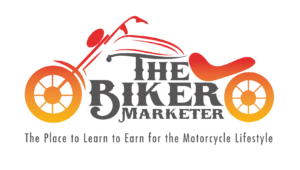Understanding Your Audience
Identify Your Target Market
Before putting pen to paper—or fingers to keys—you need to know who you’re writing for. Are they seasoned bikers or weekend warriors? Understanding the demographics and psychographics is crucial. Think about what motivates them to ride; maybe it’s the thrill of the open road or the camaraderie of biking clubs.
In my experience, knowing your audience allows you to tailor your message. For instance, if you’re writing for new bikers, they might appreciate safety gear recommendations. On the other hand, veteran riders might care more about performance upgrades.
Don’t hesitate to conduct surveys or engage with biking communities online. The more you know about your target market, the more your articles will resonate with them.
Speak to Their Pain Points
People buy products to solve problems—this is especially true for motorcycle enthusiasts. Maybe they struggle with comfort on long rides or are hunting for the best maintenance tips. Identifying these pain points will inform the content you create.
Let’s say you’ve pinpointed that many new riders are unsure about driving safely in winter conditions. You could craft a thorough guide on winter gear essentials or riding techniques. This not only helps your audience but positions you as a valuable resource.
Always approach topics from the reader’s perspective. When they feel understood, they’re more likely to trust your recommendations—and that’s what leads to sales!
Use Relatable Language
Your writing should reflect the enthusiasm and camaraderie of the biking community. Avoid overly technical jargon that might alienate casual readers. Instead, I like to intersperse some slang and friendly phrases. This makes your articles feel more like a conversation.
For example, instead of saying, “Consider the advantages of a high-performance exhaust,” I might say, “You’ll feel the raw power of your ride with an upgraded exhaust!” This simple change can really resonate with your audience.
Remember, your goal is to engage, not intimidate. Keep it casual, fun, and rich in personality—after all, biking is all about freedom and good vibes!
Creating Compelling Content
Use Storytelling Techniques
One of the most powerful tools in writing is storytelling. When you share a personal experience related to the product, your readers can visualize themselves in that scenario. I often share tales from my own biking adventures to illustrate a point or to highlight a product’s effectiveness.
For instance, if you’re promoting a new helmet, recount a ride where that helmet saved you from a nasty spill. It makes the product relatable and showcases its benefits in a real-world context.
Stories not only make your writing more engaging but also help readers connect emotionally. And guess what? Emotional connections lead to sales!
Utilize Visual Aids
Don’t underestimate the power of visuals! Incorporating images or videos into your articles can break up the text and provide additional context. For instance, if you’re reviewing a motorcycle jacket, include a picture of it in action—preferably on a ride, not just hanging in a store.
You can also create infographics summarizing key points or comparisons. Visual aids can make complex information digestible while keeping the reader’s attention. Trust me, readers are more likely to remember an article with compelling visuals than one that’s all text.
However, always make sure that any visual elements you use are high-quality and relevant; poor visuals can hurt the professional tone you want to project.
Incorporate SEO Best Practices
Let’s face it: if no one finds your excellent article, it won’t sell products! SEO is crucial for online visibility. Start by researching keywords relevant to the motorcycle products you’re discussing, and sprinkle them naturally throughout your text.
But don’t get too caught up in keyword stuffing. Write for your audience first, and search engines second. A well-structured article with headings, bullet points, and clear paragraphs can improve readability and keep people on your page longer.
Also, think about your meta descriptions and alt text for images, as these are essential elements in ensuring your article gets found. It might take some time to master SEO, but I promise it’s worth it!
Effective Call to Action (CTA)
Encourage Immediate Engagement
Now that you’ve captivated your readers with great content, don’t forget to guide them on what to do next! A strong call to action (CTA) can direct them toward purchasing or learning more about a product. This can be as simple as, “Check it out here!” or “Grab yours before they run out!”
I always like to include a CTA towards the end of my articles. After all the convincing, it’s the perfect moment to nudge them in the right direction. Sometimes, I even offer a discount code to encourage immediate purchases.
Make your CTA bold and visually appealing, perhaps with a button or highlighted text, so it stands out. You’ve done the hard work of engaging them; now make it easy to take action!

Make It Shareable
Encouraging readers to share your articles can vastly increase your reach. Besides the obvious “share this article” buttons, you should also create content that’s easy to share. Offering great tips, infographics, or insights that readers find valuable can prompt them to spread the word.
In my experience, articles that evoke strong emotions or offer unique perspectives tend to get shared the most. So make your content worthy of sharing; offer incentives like featuring the top sharis in your next post!
Remember, each share is another potential sale, and in the motorcycle world, word of mouth reigns supreme. Keep your content relatable and useful, and watch your readership grow!
Follow Up with Your Readers
Don’t just write your articles and forget about them! Engaging with your readers after the fact can go a long way. Encourage comments and questions, and make sure to respond promptly. This creates a community feel and shows you care about their opinions.
I often pose questions at the end of my articles to spark conversation. Something casual like, “What’s your favorite motorcycle gadget?” works wonders. When you engage with your audience, you build trust—and trust translates to sales!
Additionally, consider creating a newsletter or follow-up article to keep the conversation going. This is another opportunity to promote products softly while maintaining the relationship you’ve established.
Measuring Your Success
Track Analytics
Alright, let’s talk about tracking your progress. Using tools like Google Analytics can provide insights into how your articles are performing. Pay attention to metrics like click-through rates, bounce rates, and time spent on the page. These numbers can guide your future writing efforts.
From my personal experience, I’ve learned to focus on which topics resonate. If an article about safety gear gets tons of traffic, I’ll write more around that theme. Monitor what’s working and adjust your strategy accordingly.
Analytics shouldn’t just be a chore; think of it as a treasure map guiding you to content gold!
Gather Feedback
Don’t hesitate to ask for feedback from your readers on what they liked or didn’t like about your articles. You can use surveys or just ask in the comments section. Honest feedback can be a goldmine of information, helping you refine your writing style and content focus.
Remember to take constructive criticism in stride. Everyone has preferences, and a great writer learns continuously. Embrace the feedback, and let it mold you into an even better marketer.
Creating a great relationship with your readers means valuing their opinions. When they see you’re receptive to their thoughts, they’ll be more likely to return.
Adjust Your Strategies as Needed
No marketing strategy is set in stone; it should evolve with trends and your audience’s needs. Keep an eye on the latest biking trends, products, and community feedback. If you notice certain topics gaining traction, dive into them!
Flexibility in your approach can also mean experimenting with different types of content—videos, podcasts, or even hosting live Q&A sessions about motorcycle gear. Keeping things fresh can draw in new readers and maintain interest among current ones.
In marketing, adaptation is essential. Stay ahead of the curve, and your articles will consistently sell motorcycle products.
Frequently Asked Questions
What is the most important factor when writing articles to sell products?
Understanding your audience is key. Know their interests, pain points, and what drives them to purchase.
How can I make my articles more engaging?
Use storytelling techniques, relevant visuals, and relatable language. Writing in a conversational tone can also help!
What kind of content should I include to boost sales?
Focus on how-to articles, product reviews, and guides that address your audience’s needs and questions.
How do I ensure my article reaches a wider audience?
Incorporate SEO best practices, encourage sharing, and engage with your audience through comments and social media.
Is it necessary to track my article’s performance?
Absolutely! Tracking analytics helps you understand what works and what doesn’t, guiding future content creation.


